SUPERCHARGE YOUR ONLINE VISIBILITY! CONTACT US AND LET’S ACHIEVE EXCELLENCE TOGETHER!
Whether you are a new Website or an old website, while designing a content strategy it can be very easy to get lost in the race for creating new and unique content. If you are just like that, then you might be missing out on a huge opportunity to improve your organic traffic from your existing content.
Combining search engine optimization (SEO) with content marketing is essential to sustain long-term success in the ever-evolving digital marketing landscape. The ultimate goal is to produce content that continues to drive traffic, generate leads, and establish authority over time. However, even the most well-crafted pieces can lose their effectiveness as they age, gradually declining their organic performance. This phenomenon, known as content decay, can significantly impact your website’s visibility and overall SEO success.

Understanding and addressing content decay is crucial to maintaining and growing organic traffic. In this article, we will explore the concept of content decay, explain why it happens, and provide a comprehensive guide to combating it effectively.
This is because your existing content, however well may rank will start to decay in its performance in Google SERP. This decay in performance may come in 3 ways:
- Decrease in Rankings
- Decrease in Overall Clicks
- Decrease in Google Impressions
- Decrease in Page Authority
⭐️What is Content Decay in SEO?
This phenomenon of gradual decay of a specific page or content’s performance in the Google SERP over time is called Content Decay.
This is to be noted that Content Decay is not limited to just blog posts but can occur for any kind of pages in the internet. Although there are different types of content, the main categories are:
Blog Posts
Product Pages
Product Category Pages
Service Pages
Listing / Job Posting Page
Review Pages
⭐️The Impact of Content Decay on SEO and Marketing
Content decay poses a significant threat to the long-term success of your SEO and content marketing strategies. Here are some of the key ways in which it can impact your efforts:
1. Loss of Organic Traffic
One of the most direct consequences of content decay is a decline in organic traffic. As your content drops in search engine rankings, it becomes less visible to users, resulting in fewer clicks and visits. This reduction in traffic can be especially damaging if the decaying content was previously responsible for driving a significant portion of your overall site visits.
For instance, consider a blog post once ranked in the top three positions for a high-volume keyword. Over time, as new competitors enter the fray and the content becomes outdated, it may slip to the second page of search results. Given that most users rarely venture beyond the first page, the decline in traffic can be substantial.
2. Reduced Click-Through Rates (CTRs)
As content decays and falls in the search engine results pages (SERPs), the click-through rates (CTRs) associated with the targeted keywords will likely decrease. This is because users are more inclined to click on the top-ranking results, and even a small drop in position can significantly reduce CTRs.
For example, research shows that the first organic result in Google typically garners around 28-32% of clicks, while the second receives about 15-18%. If your content falls from the first to the second position, the decline in CTR can be considerable, leading to fewer visitors and potentially impacting your conversion rates.
3. Decrease in Backlink Opportunities
High-ranking content often attracts backlinks from other websites looking to cite authoritative sources. However, as your content decays and loses its top position in the SERPs, it becomes less visible and attractive to those seeking valuable references. Fewer backlinks can result, further diminishing your content’s authority and ranking potential.
Backlinks are a critical component of SEO, signaling to search engines that your content is trustworthy and relevant. A decline in backlinks not only impacts the performance of decaying content but can also have a ripple effect on your website’s overall domain authority.
4. Declining Conversion Rates
Content that no longer resonates with its audience due to outdated information or changing user intent can lead to a decline in conversion rates. Whether your goal is to generate leads, drive sales, or encourage sign-ups, decayed content is likely to only achieve these objectives if it aligns with users’ needs.
For instance, a landing page that once converted visitors into customers at a high rate may lose effectiveness if the information it provides is no longer accurate or relevant. As a result, the ROI from your content marketing efforts can decrease, making it more challenging to justify the resources invested in content creation.
5. Lower Brand Visibility and Awareness
Maintaining high SERP rankings drives traffic and contributes to brand visibility and awareness. When users consistently see your brand name in search results, it reinforces your authority and credibility in their minds. However, as content decays and slips in rankings, your brand becomes less visible, which can diminish its presence in the market.
This loss of visibility can be particularly detrimental in competitive industries where brand recognition plays a crucial role in influencing purchasing decisions. As your content fades from the spotlight, competitors may seize the opportunity to capture the attention of your target audience, potentially leading to a loss of market share.
⭐️How to Identify Content Decay?
An important part of executing any content marketing strategy is to monitor the traffic coming from your existing pages and to keep and active eye on the top performing content. Having said that, how will you identify top performing content? There are some tool that you should setup in order to monitor your page traffic performance on a daily basis.
Google Analytics 4

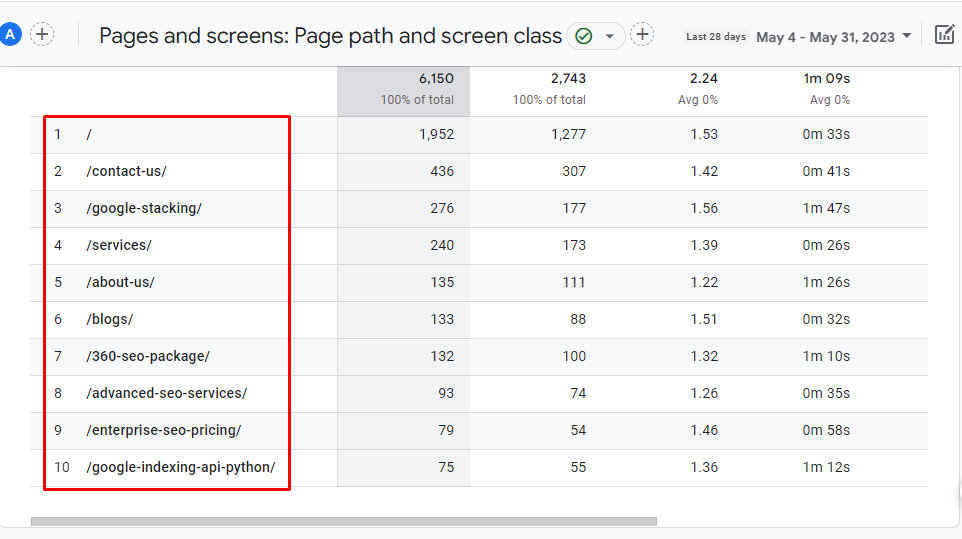
By going into the GA 4 > Engagement > Pages and Screens Report we are able to identify and monitor individual page performance in Google. This is the most accurate tool to monitor SERP performance and identify signs for content decay.
Ahrefs
If you have an Ahrefs account, you can log into it. Navigate into the Site Performance Report and you should be able to monitor your site organic traffic performance over time. The main metrics you are looking for are organic traffic and organic traffic value.
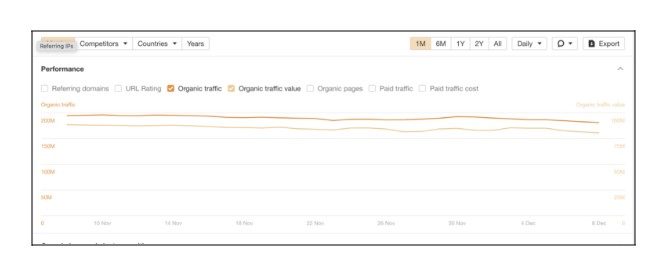
⭐️SEO Lifecycle of a Piece of Content
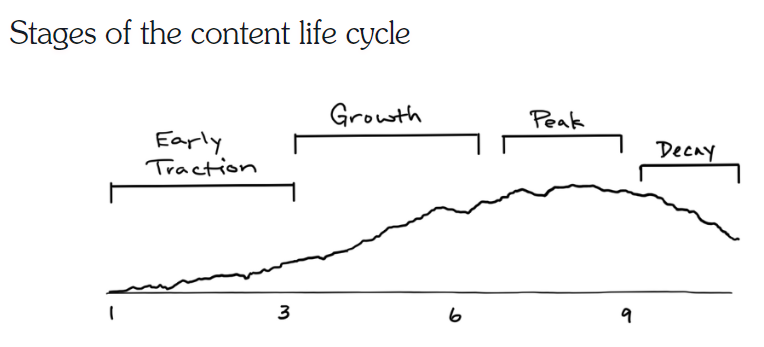
This is the average lifescycle stages after publishing a new page in the Website.
Early Traction
This is the phase where your content is recently published and takes some time to rank in the SERP. This initial period can vary anywhere between a few days to a few months. This is the time taken by search engines to understand the content and serve it against relevant search queries.
Growth
Once the search engines are able to understand and index your content, it will eventually to rank higher for the relevant search queries. Also with further On Page optimization and with relevant backlink gain, can further help to push the rankings near the first position.
Peak
Over time, published content reaches a point of maximum expansion. Several factors contribute to these limitations.
When a competitor’s piece surpasses your content in ranking, it can result in reduced clicks and backlinks for your post. Nevertheless, even if your article maintains its top position, its potential to generate traffic is constrained by the monthly search volume (MSV) of its primary keywords.
Decay
After a certain point, the SEO performance of your content can enter a state of stagnation and gradually decline.
As the piece becomes outdated or loses its competitive edge, its ranking may decrease, leading to reduced organic search visibility.
While decay is a natural process, it does not imply that you have no control over it. In the following sections, we will explore five strategies to update your content and enhance its search rankings once more. However, before delving into those strategies, let’s examine the consequences of content decay in more detail.
⭐️Different Reason behind Content Decay
There can be multiple reasons behind the decay in performance of a particular piece of webpage. Some of them are as below.
Decay in Content Freshness
Internal Competition
External Competition
Shift in Search Intent
Decay in Content Freshness
Often Search Engines prioritize Fresh content, so when a particular piece of content gets old, then there is tendency of search engines to rank a similar but newer content above it. Check the below example:
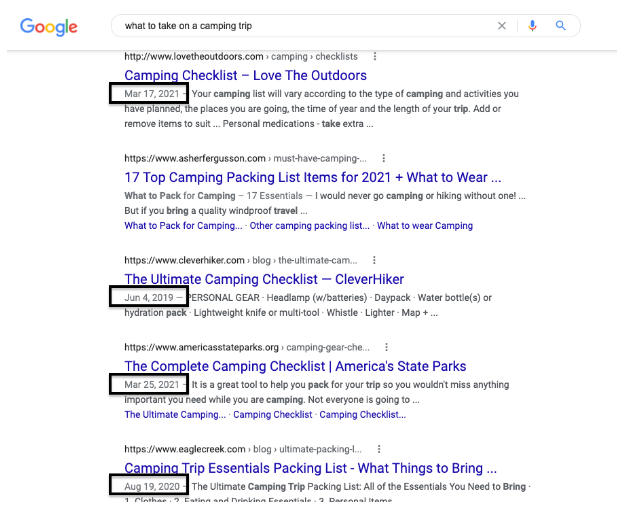
This type of issues usually occurs with Blog Content.
Internal and External Competition
This is the case when a particular type of content doesnot perform well in the SERPs due to similar pages competing against each other for the same term. These pages can be both external or internal.
Such kind of problem is faced mostly by Ecommerce businesses where too many similar categories and products compete against each other to bring each other’s ranking down.
Similar case happens with external competition. When a keyword is competitive too many sites are optimizing their content for that target keyword. Its quite easy to get ranked by another competitor as there are thousands of on-page and off-page ranking factors that contribute to page rankings.
Shift in Search Intent
Identifying the right type of content for the right type of keyword is critical in improving the relevancy of the content. It is long being believed that the relevancy of the content is the number 1 content factor and Google calculates relevancy through a number of Signals.
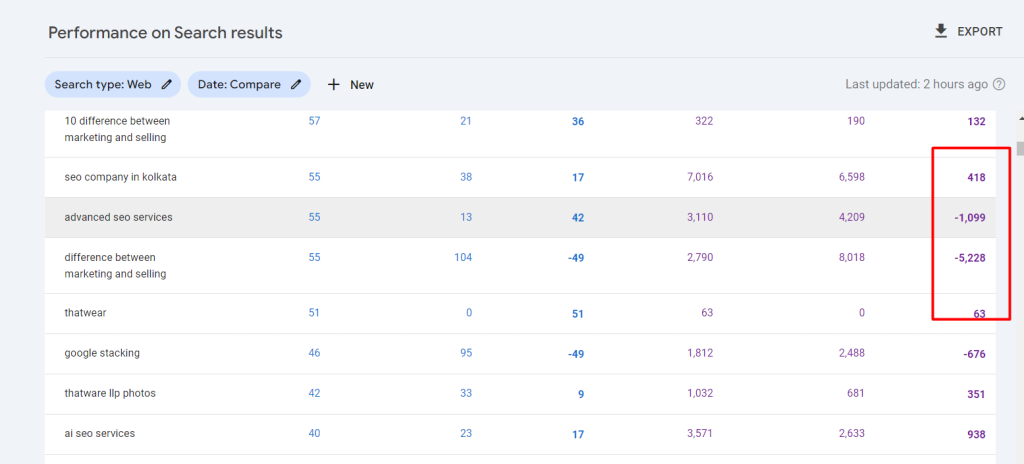
Normally there are 3 types of search intent:
Informational
Commercial
Transaction
While Blogs and Guides may rank for informational search terms , product page, category page and service pages are used to satisfy both commercial and transactional terms.
But what if the search intent itself change over time? This usually occurs with shift in technology and with new innovations and products coming up.
For example:
Someone trying to rank for Electric Car in 2017 could have done it by simply writing a long form and well optimized blogs and some backlinks.
But today if you type “electric cars” then the intention would most likely to buy. That is the reason , shopping cards and Retail store website rank high for this query.
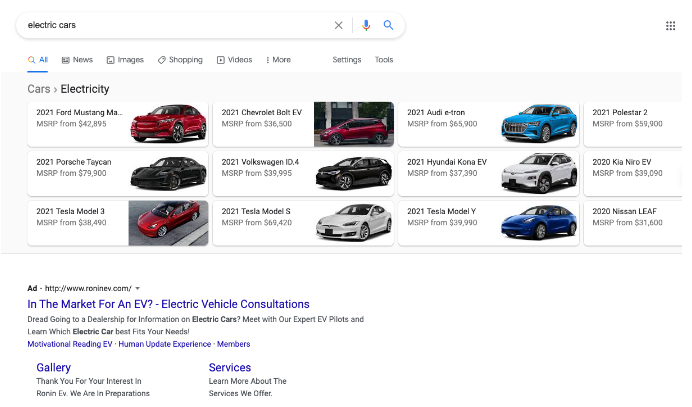
⭐️How does Content Decay affect Our SEO?
Content decay not only affects organic traffic but also has various repercussions. It results in a decline in search visibility, a drop in click-through rates (CTR), reduced business outcomes such as leads and revenue, and fewer backlinks.
Decline in search visibility: As content decays, the number of keywords that the post ranks for decreases, leading to a decline in overall visibility. It’s important to remember that blog posts often rank for numerous keywords, not just the target keyword.
⭐️Click-through rate (CTR) drops: Numerous studies have shown that the top-ranking results in search receive the highest CTR. As your decaying content falls in the search engine results pages (SERPs), your CTR will inevitably decline. This ultimately translates to receiving less of the available search traffic.
⭐️Decreased business outcomes through site behavior: When content starts decaying, it typically means that it is no longer one of the best or most relevant results. Consequently, if users click on your result but don’t find what they want or need, they are likely to leave without exploring further within your site. This makes it challenging to achieve meaningful business outcomes from visitors who don’t engage with your site.
⭐️Negative impact on backlinks
Content decay significantly impairs your backlink performance. When your content becomes outdated or fails to align with search intent, its quality diminishes, resulting in a decreased appeal for organic backlinks. In some instances, when your content is severely outdated, site owners may even remove the links leading to your content as it no longer provides a satisfactory experience for their visitors. Consequently, your ability to gain and retain backlinks is adversely affected by content decay.
⭐️How to Fix Content Decay Issues and Recover Organic Traffic?
There are two scenarios of a content decay issue:
- Where the particular content type can be updated. Eg: For Blogs, Review Type Content, Service Pages etc.
- Where the particular content type may not be updated: Eg: Product Pages, Facts, Ecommerce Category pages.
- Where the content type needs to be Changed.
⭐️Case 1: Where the Particular Content Type Can be Updated
In this case the most effective techniques to ensure a boost in organic search performance can be following:
Update Content: Update certain information in the webpage, including new research or insights into the existing piece or incase of product pages, simply updating the specifications or rewriting the titles may work.

Add New Content: This includes the following.
- Find new long tail keyword variations.
- Create topical depth by expanding on sub topics
Merge Content To Rank Higher
Combining multiple smaller blog posts that have similar rankings into a single comprehensive master post can be advantageous. By transforming your short-form content into a robust long-form post, you unlock various benefits, such as:
- Rank for more keywords.
- Explain topics in greater detail.
- Create more sharable content.
⭐️Case 2: Where the Particular Content Type Cannot be Updated
This case is applicable mostly in case of product pages and pages containing definite content like statistics.
In this case the following strategies can help recover organic traffic and improve rankings:
Refresh Meta Tags: Often rewriting the meta tags like Title and Meta Description may lead to a higher CTR and some small gains in ranks.
Check Page Level Backlink Profile: Often website focus on building backlink profile to the home page and few core group of pages. However Google does not rank websites rather it ranks webpages and hence one must focus on improving the backlink profile on a page level. This may lead to higher rankings as Google may be inclined to rank a webpage with a higher backlink profile than its immediate competition with similar depth of content.
Syndicate Content: While the content in your website may become old, often a good strategy to recover organic traffic is to promote it using syndication strategies.
Content syndication refers to republishing an exact copy of content on one or more third-party websites. They post your piece — an article, a video, an infographic, etc. — with no edits or other changes but backlinking to you on the post, praising your authorship that way.
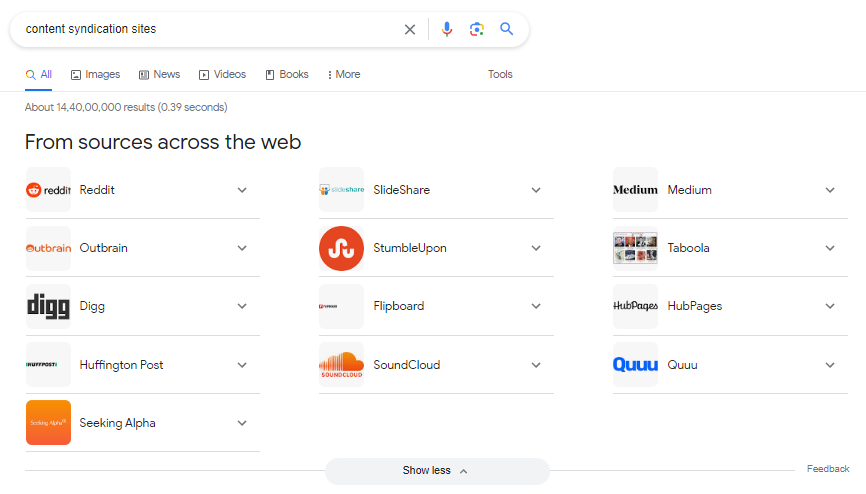
These are some of the content syndication sites. What is the advantage of it?
- These syndication sites often have higher DA and your article may naturally rank for some of its terms.
- Having multiple backlinks from these High DA Sites may improve the authority of the original page and it may regain its rankings.
- These content syndication sites are quite popular and may drive additional referral traffic to your website.
⭐️Optimize Page Wise User Experience
Optimizing user experience is crucial for retaining visitors and facilitating smooth navigation on your website. The following factors can negatively impact UX:
Slow loading times: Improving the loading speed of your website ensures that users can access your content quickly and without frustration.
Distracting visuals: Avoid cluttered or distracting visuals that can divert users’ attention from the main content. Use visually appealing elements that enhance the overall user experience.
Unresponsive images or videos: Ensure that images and videos on your website are properly optimized and responsive across different devices. This allows users to view and interact with the media seamlessly, enhancing their overall browsing experience.
5 Proven Strategies to Address Content Decay
Now that we’ve explored the concept of content decay, its causes, and its impact, let’s delve into five proven strategies to address and reverse it. These strategies will help you maintain your content’s relevance, visibility, and effectiveness over time.
1. Regular Content Audits: Identifying and Prioritizing Decaying Content
The first step in combating content decay is to conduct regular content audits. A content audit involves analyzing your existing content to identify underperforming pieces or showing signs of decay. Doing this lets you prioritize which content to update, repurpose, or consolidate.
How to Conduct a Content Audit
- Collect Data: Use tools like Google Analytics, Google Search Console, and SEO software (e.g., Ahrefs, SEMrush) to gather data on your content’s performance. Key monitoring metrics include organic traffic, rankings, CTRs, and engagement rates.
- Identify Decaying Content: Look for content that has experienced a decline in traffic, rankings, or CTRs over time. Additionally, identify outdated content that no longer aligns with current user intent.
- Prioritize Content for Updates: Prioritize content that targets high-value keywords or has the potential to drive significant traffic if updated. Consider factors such as the topic’s importance, its historical performance, and the keyword’s competitiveness.
- Create an Action Plan: For each piece of decaying content, determine whether it should be updated, repurposed, or consolidated with other content. Develop a plan to address the identified issues and improve the content’s performance.
Benefits of Regular Content Audits
- Identify Opportunities: Content audits reveal opportunities to improve existing content, which can be more cost-effective than creating new content from scratch.
- Improve SEO: Addressing decaying content can prevent further ranking declines and potentially regain lost positions in the SERPs.
- Maximize ROI: Regular audits ensure that your content marketing efforts continue to deliver value, maximizing the return on your investment in content creation.
2. Updating and Refreshing Content: Breathing New Life into Old Posts
One of the most effective ways to combat content decay is to update and refresh your existing content. Updating involves revising the content to ensure it remains accurate, relevant, and aligned with current best practices. This can help restore its ranking potential and improve its performance in the SERPs.
Steps to Update and Refresh Content
- Review the Content: Review the existing content to identify outdated information, broken links, and changes in user intent. Note any gaps that need to be filled or areas that could benefit from additional detail.
- Update Information: Replace outdated statistics, facts, and references with current data. Ensure the content reflects industry trends, best practices, and technological advancements.
- Enhance the Content: To enhance the content’s value, consider adding new sections, case studies, examples, or visual elements. These can include infographics, videos, or interactive elements that engage readers and improve the user experience.
- Optimize for SEO: Re-evaluate the content’s SEO elements, including keyword usage, meta tags, headings, and internal links. Ensure the content is optimized for the target keywords and aligns with current SEO best practices.
- Republish the Content: After making updates, republish the content with a new publish date to signal to search engines that it has been refreshed. Promote the updated content through your marketing channels to attract new readers and regain lost traffic.
Benefits of Updating Content
- Restore Rankings: Updated content is more likely to regain lost rankings and traffic, as search engines favor fresh, relevant information.
- Improve User Experience: By providing accurate and up-to-date information, you enhance the user experience, leading to higher engagement and conversion rates.
- Extend Content Lifespan: Regular updates can extend the lifespan of your content, allowing it to continue driving traffic and delivering value for years to come.
3. Repurposing Content: Expanding Reach and Engagement
Another effective strategy to combat content decay is repurposing your existing content into different formats. Repurposing allows you to reach new audiences and maximize the value of your content by presenting it in ways that appeal to various user preferences.

How to Repurpose Content
- Identify High-Performing Content: Start by identifying content that has performed well in the past but may be showing signs of decay. These pieces are prime candidates for repurposing, as they have already demonstrated their value to your audience.
- Choose a New Format: Consider repurposing the content into a different format that aligns with your audience’s preferences. For example, a blog post could be transformed into a video, podcast episode, infographic, or social media post.
- Adapt the Content: Modify the content to suit the new format while preserving its core message and value. For example, if you’re repurposing a blog post into a video, you might create a script, add visual elements, and record a voiceover.
- Distribute and Promote: Once the content has been repurposed, distribute it through the appropriate channels to reach your target audience. Promote the repurposed content on social media, in email newsletters, and through your website to maximize its reach.
Benefits of Repurposing Content
- Expand Reach: Repurposing allows you to reach new audiences who may prefer different content formats, increasing your overall reach and engagement.
- Maximize ROI: Repurposing existing content can maximize the return on your content creation efforts without starting from scratch.
- Reduce Content Decay: Repurposing helps combat content decay by giving new life to content that may no longer perform well in its original format.
4. Content Consolidation: Merging and Combining Posts
Content consolidation involves merging multiple pieces of content that cover similar topics into a single, comprehensive post. This strategy is particularly effective for combating content decay caused by internal competition or keyword cannibalization.
Steps to Consolidate Content
- Identify Overlapping Content: Use your content audit to identify multiple pieces of content that target the same or closely related keywords. These posts may compete in the SERPs, leading to lower rankings and performance.
- Choose a Primary Post: Select the most authoritative or highest-performing piece of content as the primary post that will serve as the foundation for the consolidated content.
- Merge and Expand: Combine the relevant information from the overlapping posts into the primary post, ensuring that the content is comprehensive and covers the topic in depth. Fill in any gaps and add new insights to enhance the value of the consolidated post.
- Redirect Old URLs: Once the content has been consolidated, set up 301 redirects from the old URLs to the new, comprehensive post. This ensures that any existing backlinks and traffic are directed to the updated content, preserving its SEO value.
Benefits of Content Consolidation
- Improve Content Quality: Consolidated content is often more comprehensive and valuable, which can lead to higher rankings and increased traffic.
- Reduce Keyword Cannibalization: By merging overlapping content, you eliminate internal competition and improve your chances of ranking well for your target keywords.
- Preserve Link Equity: Redirecting old URLs to the consolidated post ensures that any backlinks pointing to the original content continue contributing to your site’s authority.
5. Leveraging User Feedback and Engagement Metrics
User feedback and engagement metrics provide valuable insights into how your content is performing and where improvements can be made. By leveraging this data, you can identify content showing signs of decay and take proactive steps to address it.
How to Use Feedback and Metrics
- Monitor Engagement Metrics: Use tools like Google Analytics, Hotjar, and user surveys to monitor key engagement metrics such as bounce rates, time on page, and scroll depth. High bounce rates or low engagement can indicate that content no longer resonates with your audience.
- Collect User Feedback: Solicit feedback from your audience through comments, surveys, and social media. Ask them what they find valuable, what could be improved, and what topics they want covered.
- Analyze Trends: Look for feedback and engagement data patterns to identify common issues or areas where your content may fall short. For example, if multiple users mention that a piece of content is outdated, it may be time for an update.
- Implement Changes: Based on the feedback and metrics, make the necessary updates or enhancements to the content. This could involve revising outdated information, improving readability, or adding new sections to address user needs.
Benefits of Leveraging User Feedback
- Enhance Relevance: Addressing user feedback can ensure that your content remains relevant and aligned with your audience’s needs.
- Improve User Experience: Responding to engagement metrics and feedback helps you create a better user experience, which can lead to higher engagement and conversion rates.
- Prevent Content Decay: Proactively addressing issues identified through feedback and metrics can prevent content decay and extend the lifespan of your content.
⭐️Final Thoughts
Content decay is an inevitable challenge in digital marketing, but it can be effectively managed and even reversed with the right strategies. By conducting regular content audits, updating and refreshing content, repurposing valuable assets, consolidating overlapping posts, and leveraging user feedback, you can ensure that your content continues to drive traffic, generate leads, and contribute to your long-term SEO success.
In a constantly changing digital landscape, staying ahead of content decay requires a proactive approach and a commitment to maintaining the quality and relevance of your content. Following the strategies outlined in this guide, you can protect your content from decay and keep your SEO efforts on track for sustained success.

